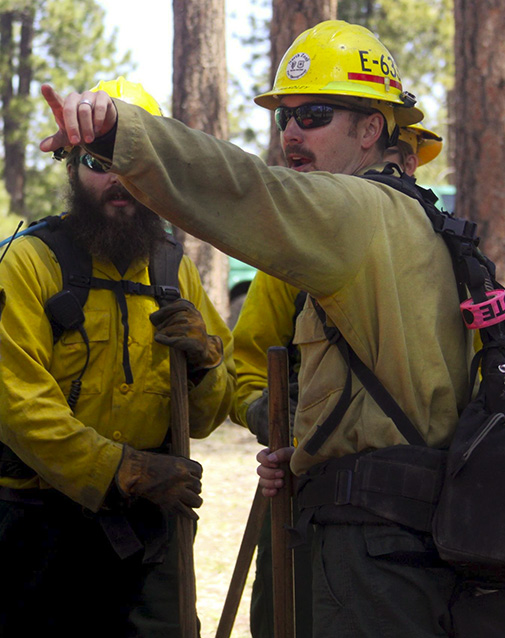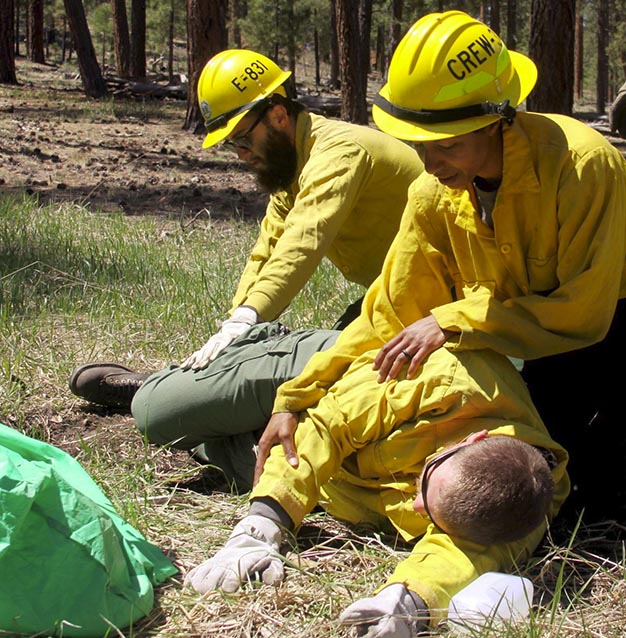Wildland firefighters from the Kaibab National Forest, Color Country Bureau of Land Management and Grand Canyon National Park trained together May 12, 2016 at the North Kaibab Ranger District for their annual readiness review training.
“Today we are here to take the time to build our team before we engage, to remember our fireline leadership core values: duty, integrity, respect.” Jay Lusher, Chief Fire and Aviation, Grand Canyon National Park
“We Train Together to Respond Together”

Credit: U.S. Forest Service, Southwestern Region, Kaibab National Forest. Photo by David Hercher.
Personnel included six engine crews, three fire lookouts, a three-member fuels crew, three fire prevention specialists, four members of the Grand Canyon National Park helitack crew, four resource specialists from the Kaibab National Forest, fire leadership from both the Kaibab National Forest and Grand Canyon National Park, and law enforcement personnel from Grand Canyon National Park.
Participants rotated through a variety of stations working on a simulated wildfire, hoselays, water pumping, fire shelter deployment, medical emergency treatment and transport, tactical decision making, fire prevention and education, coordinating with fire lookouts and working alongside the North Zone dozer operator during wildfire operations.
Prior to commencing the day’s training, participants discussed the intent and expectations of the exercise, and Jay Lusher, Chief Fire and Aviation, Grand Canyon National Park, said, “Today we are here to take the time to build our team before we engage, to remember our fireline leadership core values: duty, integrity, respect.”
“Fires eventually will go out, trees will grow back, and homes can be rebuilt, but at the end of the day we want everyone to make it back home safely,” added Kaibab National Forest Fuels Specialist Drew Leiendecker, as both he and Lusher reiterated the wildland firefighting community’s “Life First” leader’s intent – to remind all wildland firefighters to commit to “Stop (assess the situation), Think (critically about what is going on) Talk (about what you see), and Listen (to what is being said and what your gut is telling you), before you Act (providing a level of risk management before blindly charging in as if it is just another routine task, assignment, or mission)” in order to help eliminate unnecessary exposure and increase the odds that everyone goes home.
Closing out the day’s training, participants conducted an after action review and provided fire managers with feedback on the day’s successes and improvements for next season.
“The day was a success. Our firefighters demonstrated that they’re ready for the 2016 fire season. We will continue to focus on the basics, build on our strengths, and constantly seek opportunities to improve, “said North Zone Fuels Specialist Dave Robinson. “Thank you to everyone who helped make the day a success, and remember to seek training opportunities, ask questions, and learn from each other daily.”

Credit: U.S. Forest Service, Southwestern Region, Kaibab National Forest. Photo by David Hercher.
Last updated: December 15, 2017
